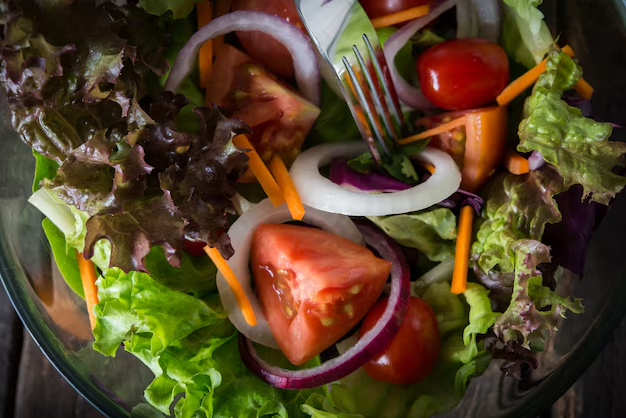Keeping It Cool: How to Preserve Food Without a Refrigerator
In an age dominated by modern conveniences, the idea of preserving food without a refrigerator might seem a bit old-fashioned. However, whether you're living off the grid, planning for an emergency, or simply curious about alternative methods, learning how to prolong the freshness of your food is a valuable skill. This guide dives into time-tested strategies and innovative techniques to keep your food safe and delicious without the help of electric cooling.
The Art of Food Preservation: A Journey Back in Time
Before refrigerators became household staples, our ancestors relied on several ingenious methods to prevent spoilage. These techniques not only safeguarded against hunger but also enriched the culinary landscape with unique flavors and textures. By understanding these traditional methods, you'll not only preserve your food but also tap into a rich cultural legacy.
Drying and Dehydration
Drying food removes moisture, inhibiting the growth of bacteria, molds, and yeasts. It's an age-old method that's still widely used today.
- Sun Drying: Ideal for fruits, vegetables, and herbs. Spread them on a clean surface under direct sunlight while ensuring good air circulation. For safety, cover with a fine mesh to keep pests away.
- Air Drying: Hang herbs, corn, or peppers in a well-ventilated area. This slow method ensures flavors are concentrated.
- Oven Dehydration: Set your oven on a low temperature and leave the door slightly ajar to let moisture escape.
Salting: A Time-Tested Preservative
Salt draws out moisture and creates an inhospitable environment for microbes. Many cultures have relied on salting methods for centuries.
- Brining: Submerging foods in a saltwater solution is effective for meats and vegetables.
- Dry Salting: Cover foods in salt, allowing the natural juices to create a brine. This method is excellent for meats like bacon or fish.
Canning: Bottling Up Freshness
Canning keeps food safe by sealing it in airtight containers and applying heat to destroy microorganisms.
- Water Bath Canning: Suitable for acidic foods like fruits, jams, and pickles. The high acidity level helps in preventing microbial growth.
- Pressure Canning: Necessary for low-acid foods, including vegetables and meats, to eliminate the risk of botulism.
Fermentation: A Probiotic Powerhouse
Fermentation not only preserves food but adds beneficial bacteria, enhancing both flavor and nutrition.
- Kraut and Kimchi: Fermented cabbage products which develop a tangy flavor over time.
- Kefir and Yogurt: Fermented milk products that become safe and more digestible.
Smoking: Adding Flavor and Longevity
Smoking food both flavors and preserves it, with two main types of smoking techniques.
- Cold Smoking: Ensures meats are cured but not cooked, maintaining their raw flavor. It's often combined with other preservation methods.
- Hot Smoking: Cooks the food while adding flavor, providing a slightly shorter shelf life than cold smoking.
Elevating Preservation Techniques: Modern Twists on Time-Tested Methods
Our ancestors knew what they were doing, but that doesn't mean we can't improve upon their methods with a dash of modern ingenuity.
Use of Natural Coolers
If you're blessed with a nearby body of water or a cool underground cellar, these natural environments can act as effective food storage solutions.
- Spring Houses: Structures built over springs where food can be kept cool due to running water.
- Root Cellars: Underground rooms used for keeping produce fresh by utilizing the earth's natural temperature regulation.
Vacuum Sealing for Longevity
Vacuum-sealing food in jars or bags removes air, preventing oxidation and extending shelf life.
- Bulk Preservation: Seal large amounts of dried or freshly harvested foods to maintain freshness for months.
Charcoal and Cloth: A Simplified Cooler
This easy-to-make cooler uses evaporative cooling principles. Wrap a clay pot with a damp cloth and place it in a well-ventilated area. The evaporation process cools the contents inside the pot.
Practical Tips for Everyday Use
Breaking away from the fridge may sound daunting at first, but incorporating these methods into your daily routine can be both straightforward and rewarding.
Harvesting and Storing at Optimal Times
- Harvest fruits and vegetables just before full maturity for maximum storage life.
- Store in cool, dark places to extend freshness — conditions like those found in basements or cool pantries are ideal.
Observing and Checking Regularly
- Keep an eye on your preserved foods for signs of spoilage such as unusual colors or smells.
- Rotate your stock: Use the oldest items first to ensure nothing goes to waste.
🍏 Summary of Key Preservation Techniques and Tips
Here's a quick recap of how you can preserve food successfully without relying on refrigeration:
- Drying: Use the power of the sun or air circulation for long-term preservation.
- Salting: Utilize brining or dry salting for protecting meats and vegetables.
- Canning: A reliable method for sealing and safeguarding various foods.
- Fermentation: Naturally increases shelf life while boosting probiotic content.
- Smoking: Adds both flavor and preservative properties to meat and fish.
- Natural Coolers: Explore spring houses and root cellars for eco-friendly cooling.
- Observation & Rotation: Ensure regular checks to prevent spoilage and rotate your pantry stock effectively.
Bringing It All Together: Preserving Food with Conscious Thought
Incorporating these preservation methods not only underscores a sustainable lifestyle but also invites you to embrace a harmonious relationship with food. Each technique contributes to a tableau of flavors and textures that modern refrigeration often lacks. By understanding and practicing these methods, you're not just preserving food but also a tradition of resilience and creativity that has served humanity for generations. Embrace the process, and let each preserved jar, dried fruit, and fermented bottle usher in a newfound appreciation for the art of food preservation.
